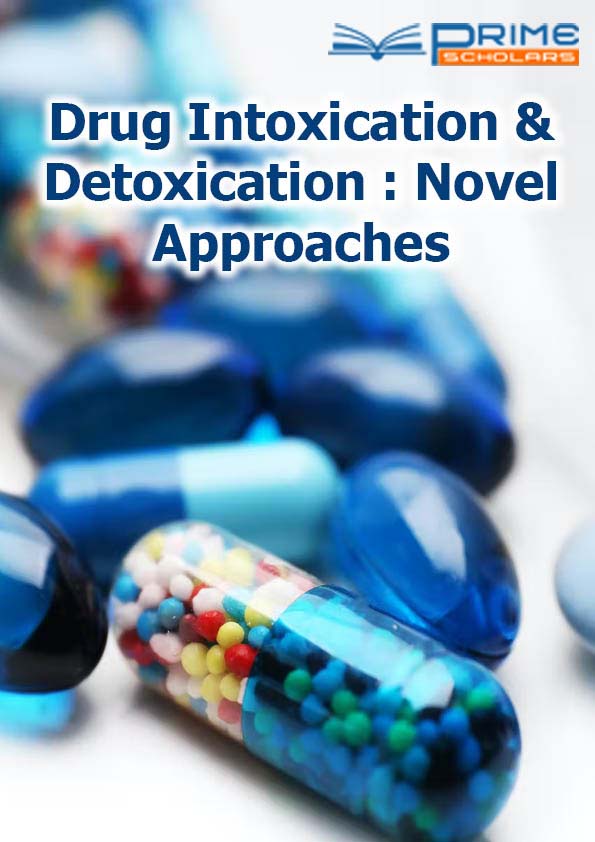Commentary - (2023) Volume 4, Issue 2
Focusing on Autophagy with Normal Items as an Expected Restorative Methodology
Nada Radwan*
Department of Anatomy, United Arab Emirates University, UAE
*Correspondence:
Nada Radwan,
Department of Anatomy, United Arab Emirates University,
UAE,
Email:
Received: 31-May-2023, Manuscript No. DIDNA-23-16833;
Editor assigned: 02-Jun-2023, Pre QC No. DIDNA-23-16833 (PQ);
Reviewed: 16-Jun-2023, QC No. DIDNA-23-16833;
Revised: 21-Jun-2023, Manuscript No. DIDNA-23-16833 (R);
Published:
28-Jun-2023, DOI: 10.36648/DIDNA 4.2.13
Description
Cellular homeostasis requires a continuous coordination between
biosynthetic restoration and the catabolic cycle. Complete
autophagy (hereafter referred to as autophagy) and the
Ubiquitin Proteasome Scaffold (UPS) are two intrinsically characteristic
proteolytic scaffolds in eukaryotic cells that exhibit
extensive disruption. Autophagy was evaluated and followed
an elusive model of execution because specialized UPSs, especially
in the context of phone redesign, can often only recognize
volatile protein substrates. Autophagy regulates longlived
unwanted cellular proteins, mitochondria, endoplasmic
reticulum (ER), Golgi apparatus, and peroxisomes. Autophagy
is important in cellular digestion and energy homeostasis by
breaking down proteins, lipids (lipophagy), starch (glycophagy)
and iron (ferritinophagy) to fuel energy and supplement stores.
Due to various cellular stressors such as metabolic pressure,
autophagy is typically used as a component that maintains the
durability of healthy and dangerous cells. Recently, however,
accumulating evidence has focused on the importance of autophagy
and the multiple roles it plays in various human diseases,
including tumors. For example, adaptation of autophagy
and acquired alterations in autophagy-related traits (ATGs) that
regulate autophagy are thought to be involved in the development
of human malignancies. Autophagy has complex and
ancillary activities in malignant tumors, and drugs that induce
and suppress autophagy are being prepared as therapeutics for
the disease. This research on regular products may then lead to
the discovery of new and useful ways in which autophagy-driven
diseases, especially tumor migration, can be controlled. Autophagy
is essential for maintaining cell homeostasis. In fixed
cells, this homeostatic movement provides great power to
fight carcinogenesis. Therefore, many oncoproteins suppress autophagy and some tumor suppressor proteins promote
autophagy. Furthermore, autophagy may contribute to oncogene-
induced cell death or oncogene-induced senescence, two
essential tumor suppressor tools. Moreover, autophagy underlies
optimal anticancer immune surveillance. Nevertheless,
autophagy promotes the spread of malignant tumors through
various systems, and pharmacological inhibitors of autophagy
may exert potent antitumor effects in certain circumstances.
Enhanced autophagy in the stromal compartment of pancreatic
disease supports carcinogenesis through the release of the
trivial aminocorrosive alanine induced by autophagy, thereby
promoting mitochondrial digestion of malignant proliferating
cells and a harsh microenvironment. Enhanced binding of LC3-II in ovarian disease stromal cells may promote the development
of malignant proliferative cells.
Conclusion
Petrospongiolide M (PSM) exerts an inhibitory effect on autophagy
in human histiocytic lymphoma cells (U937) by downregulating
beclin levels. As an immunoproteasome inhibitor, PSM
binds to dynamic sites in the inner core of the proteasome in
her U937 cells, accumulating ubiquitinated proteins and p53,
which regulates cell cycle and cell passage. PSM thus addresses
an intriguing particle for controlling intracellular protein degradation
through the dual impediment of the proteasome and
autophagy.
Acknowledgement
None.
Conflict Of Interest
The author’s declared that they have no conflict of interest.
Citation: Radwan N (2023) Focusing on Autophagy with Normal Items as an Expected Restorative Methodology. Drug Intox Detox:
Novel Approaches. 4:13.
Copyright: ©2023 Radwan N. This is an open-access article distributed under the terms of the Creative Commons Attribution
License, which permits unrestricted use, distribution, and reproduction in any medium, provided the original author and source
are credited.
